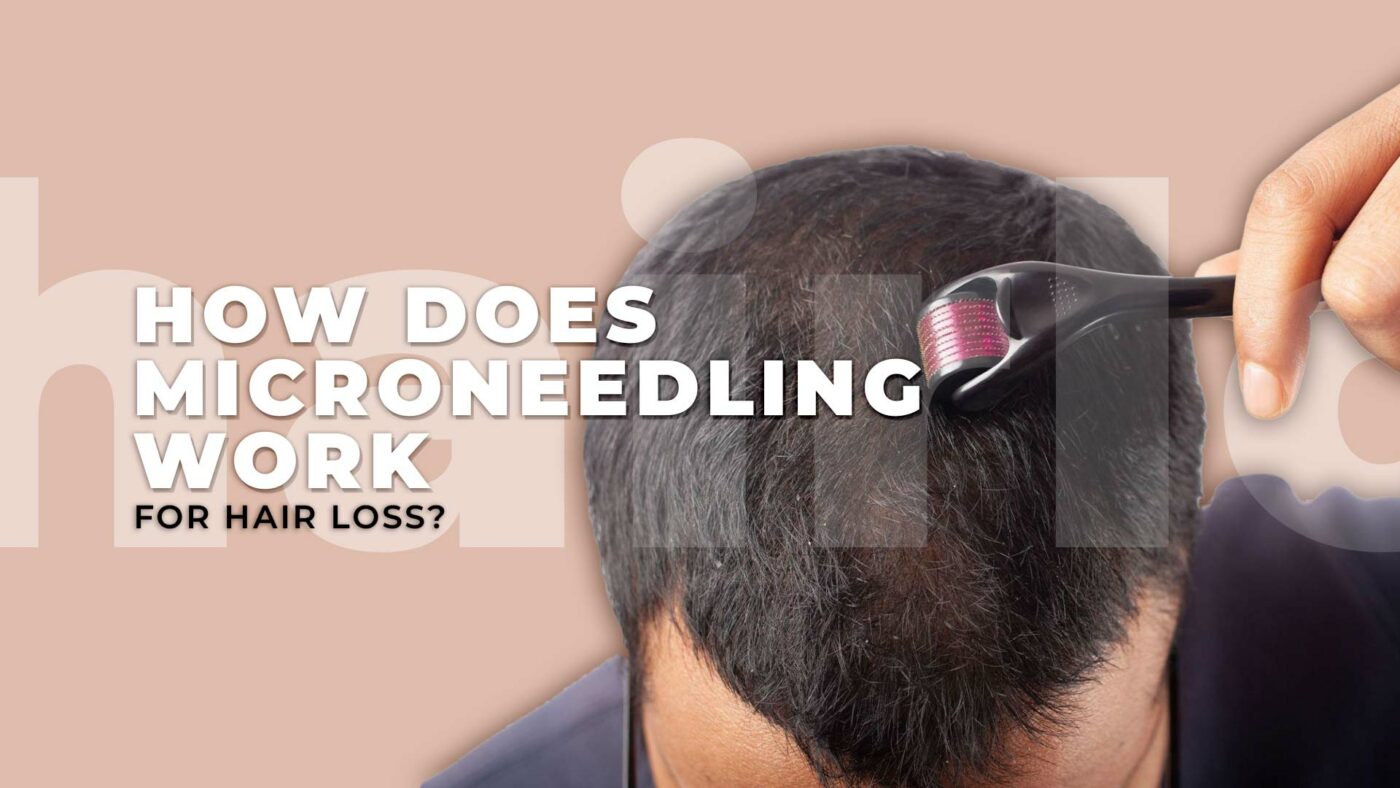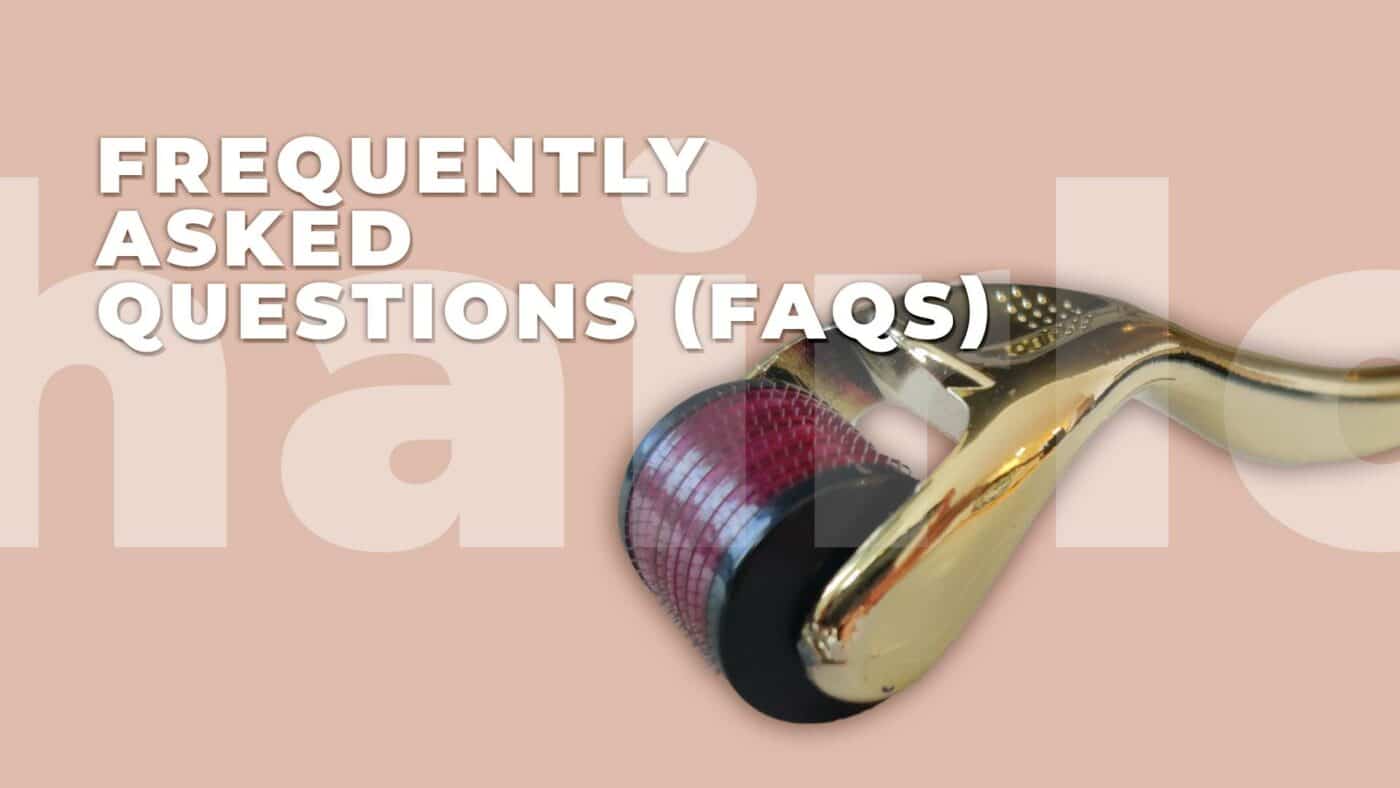Microneedling For Hair Loss: Everything You Need To Know!

Microneedling, also known as Collagen Induction Therapy, is a cosmetic procedure that involves the use of sterilized needles in order to prick the skin. It is mainly used to address the aging effects. You might also hear it called skin needling. The needling causes small wounds or minor skin injuries, which help make more collagen and elastin, helping the skin in many ways and making the person look healthier and younger.
Although it is mainly used to improve the health of the skin, it can also be used as a method to treat the condition of hair loss. It helps to regenerate and improve the hair follicles’ health in the same way it heals the skin by creating wounds. Microneedling scalp is known to grow new hair and thicken the thinning ones that can be seen in male pattern baldness.
Table of Contents
Microneedling for hair growth benefits
Microneedling became popular as a treatment for scars around 1990. Collagen production is believed to be beneficial for the treatment of acne scars. Since that time, it has been researched as a potential remedy for the treatment of hair loss because it is believed that hair microneedling may induce stem cells in the hair follicles that can help the growth of hair.
Scalp microneedling also promotes the usage of products that are used to treat androgenetic alopecia, such as topical steroids, Minoxidil, etc.
How does microneedling work for hair loss?

Microneedling begins by using a roller with needles. The needles’ size can go from less than 1 mm to a few mm. All these needles are present in a roller, which is a handheld device. The device is used for rolling and creating small wounds or injuries in the treatment area.
Some believe that this process helps the release of factors that are beneficial for the production of new hair or can directly stimulate hair growth after causing small wounds.
Around 45 minutes before the treatment begins, the healthcare provider applies a topical anesthetic to help reduce the pain you may feel.
Although the procedure time may vary according to the size of the area, it usually takes around or less than 10 minutes for the process of microneedling. After the process, the healthcare provider is likely to apply a topical balm or an injection to the area of treatment.
Side Effects of Microneedling
Due to the fact that it causes small injuries or wounds to the skin, there are always some risks of side effects involved with the process of microneedling. Some of the common side effects of microneedling on the head are:
- Pain
- Wellness
- Redness
- Bruising
There are also chances that the process of microneedling can cause scars on the skin, but the good thing is that most of the side effects are likely to go away within 5 days after the treatment, still, there are certain things you need to take care of and discuss with your healthcare provider, those are:
- If you have a history of eczema.
- If you have a condition that causes slow healing, for example, diabetes.
- If you are using any medicines for treating other health conditions.
- If you are pregnant, pregnant women are usually not recommended microneedling.
- Remember that this process is not a quick fix for anything. It will take time to show the results because it takes time for the body to heal.
Do not use minoxidil medicine immediately after microneedling because it can make the medicine absorbed faster, leading to more itching and burning on the head. It is advised to get advice from your healthcare provider regarding when you can start using the medicines again.
Make sure you protect your skin after the treatment because your scalp is likely to be sensitive to sunlight. Wearing a hat or sunscreen is recommended for a few days after the treatment in order to protect the scalp.
The risks do not end here. You need to take care of the infection as well because although needles are small, there are still wounds that can create the possibility of infection. Make sure you follow the aftercare instructions and keep the treated area clean for some days.
The bottom line is that you will need to take immense care of your treated area for the first few days after the treatment because there is not just one single thing you need to take care of but risks of multiple side effects.
Derma is rolling for hair loss at home.
Microneedling for hair loss at home is used in order to save money and use the flexibility of being at home. Dermarollers are purchased by people who want to do microneeling on their own at home. It can save a lot of money because treating hair loss with this process at home is three times cheaper than getting an expert for the treatment.
But doing this by yourself means you need to know how it is done, right? There are a few things you need to take care of and know of, which are:
- Know the right size of your needles.
- Know how to use equipment that allows you to see the back of your head and parts of your scalp.
- Know how to be as effective as a professional while treating
- Know when to stop
- Know how to use every piece of equipment properly
- Know how much pressure to exert and how to roll the roller properly
Not knowing these things can not only increase the chances of experiencing side effects but can also make the treatment go completely to waste.
You will indeed save a lot of money by doing the process on your own, but it is still a wise decision to get help from a licensed microneedling expert because that will reduce the risk of experiencing side effects and increase the chances of seeing positive results.
How much does microneedling for hair loss cost?

Microneedling can cost from anywhere around $100 to $700 for one session. The amount usually depends upon the size of the area you are getting treated. Your insurance may not cover the cost of microneedling unless you are getting it for some medical purposes because it is a cosmetic treatment.
How long does it take to see results from microneedling for hair loss?
Using a derma roller to regrow hair can take around 8-10 weeks to show favorable results, but it is crucial to be consistent with the sessions. You also need to take breaks between days in order to give your cells the time to activate. Do not derma roll more than two times per week at all.
The Final Thought
Microneedling is an effective way to promote the growth of hair, but it needs to be done with extra care and requires a good amount of money. From pretreatment to posttreatment, you need to make sure you are following the instructions properly to ensure the complete safety of your scalp. It can be tempting to get a derma roller by yourself and do the treatment at home but do not forget about the risks it comes with. If you are not a professional, try to get help from a licensed expert because that reduces the risks and increases the chances of getting better results.
It is also crucial to know if the expert is really an expert, and you can know it by seeing their portfolios, etc., because you do not want someone who is not experienced enough to do microneedling on your scalp. Be consistent with the process and give your scalp the time to heal itself and grow back the hair.
FAQs

1. Can I use shampoo after derma rolling?
Yes, you are advised to clean your scalp after derma rolling, and using a gentle shampoo can do most of the work. Be consistent with the routine for around 6 months.
2. What size is Microneedling for hair loss?
You can use needles of sizes 0.225 to 0.5 mm. They will puncture your scalp just enough to promote hair growth and prevent further hair loss.
3. Can I use a derma roller every day?
No, do not use the derma roller every day. Give your cells and body the time to regenerate for hair growth. Do not do the treatment more than twice a week.
References
- Skin needling DermNet. https://dermnetnz.org/topics/skin-needling.
- Isom, C. (2022) Dermapen skin needling helps skin repair itself, Dermapen. Available at: https://dermapen.com/dermapen-skin-needling/
- Chakraborty, A. (2023) Derma roller for hair: Benefits, side effects & how to use it!, Bodywise. Bodywise. https://bebodywise.com/blog/derma-roller-for-hair
Disclaimer
HisBlue is not a substitute for professional medical care or advice from your doctor. The health information on the HisBlue website is general and provided for your information only. We have ensured our content is accurate and current, with reviews by expert doctors. However, we cannot guarantee its accuracy or timeliness. This information is not meant to replace the diagnosis, treatment, or judgement of your doctor or another qualified healthcare provider.


